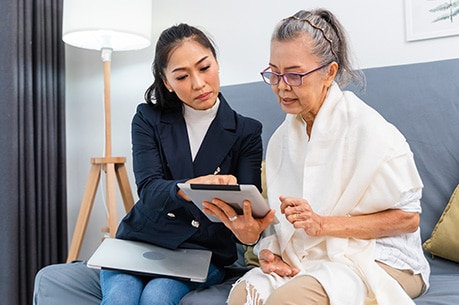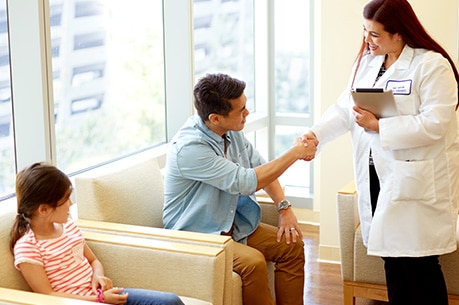COVID-19 testing information

There are 3 kinds of COVID-19 tests:
- COVID-19 self-tests, also known as home antigen tests, look for antigens or proteins from the virus in your body.
- Combo COVID-19 and flu self-tests look for antigens or proteins from the COVID-19 virus and flu virus in your body.
- PCR tests look for the virus’s genetic material in your body. These tests are typically done at a lab.
How to get COVID-19 self-tests
You can get a COVID-19 self-test at a Kaiser Permanente facility or pharmacy, making it easy and convenient to pick one up after your next appointment. Medi-Cal members 21 years and older will need prior authorization to get a COVID-19 self-test. Except for Medicare Advantage and certain employer-sponsored plan members, self-tests are available at no cost to you.* You may need to pay upfront and file a claim for reimbursement.
Find a pharmacy near you.
Are the expiration dates on the self-test boxes accurate? The Federal Drug Administration (FDA) has extended the expiration dates on some brands of COVID-19 self-tests. To see if your brand has a new expiration date, visit the FDA’s website and type the brand name of the self-test into the search field. If your brand has a new expiration date, that means your self-test is reliable up to that date if you follow the manufacturer’s instructions.
How to take a self-test
Self-tests are highly accurate when you follow the manufacturer’s instructions. Your test results are usually ready within 15 minutes.
Remember, a negative self-test doesn’t mean you don’t have a virus. So, if you have symptoms, you should treat them at home and wear a mask until they go away. Then take another self-test within a few days to make sure that you don’t have COVID-19 or the flu.
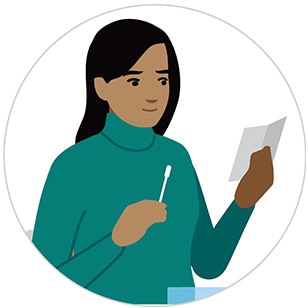
Step 1: Collect your sample
Insert the cotton swab into one of your nostrils and swirl according to the instructions. Repeat this in your other nostril.
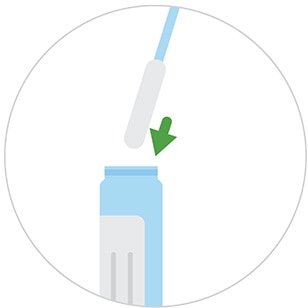
Step 2: Process your sample
Place the swab into the test tube and swirl it around according to the instructions.
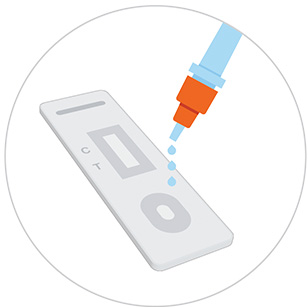
Step 3: Test your sample
Squeeze a few drops of your sample onto the test strip according to the instructions, then wait 15 minutes.

Step 4: Read your results
After 15 minutes, your self-test is ready. Read the test instructions to see if your test shows a positive or negative result. Even a faint or fading line can mean a positive result.
A positive COVID-19 test means the test detected the virus and you’re either infected or recently were infected.
About positive COVID-19 test results
About negative COVID-19 test results
If you tested negative while having symptoms and you followed the testing instructions correctly, it’s possible that you don’t have COVID-19. However, this negative result doesn’t completely confirm that you're free from infection.
It’s important to follow the manufacturer’s instructions for performing the test at home to increase the likelihood of an accurate result.
If you have concerns or if your symptoms worsen, visit kp.org/getcare or use our mobile app to access care.
Exposure to COVID-19
A COVID-19 test is recommended if you are experiencing COVID-19 symptoms (including, but not limited to, fever or chills, cough, congestion or runny nose, sore throat, new loss of taste or smell, fatigue, muscle or body aches, headache, nausea or vomiting).
If you don't have symptoms, you don't need a test (even if you were exposed).
Reimbursement for testing
If you purchase a self-test from a provider who’s outside the Kaiser Permanente network, you may be able to get half of the cost reimbursed. This reimbursement doesn’t apply if you’re a member of our Medicare Advantage plan or of an employer-sponsored plan.*
Medi-Cal members may request reimbursement for self-tests purchased outside Kaiser Permanente pharmacies by contacting the Medi-Cal Rx Customer Service Center toll-free at 1-800-977-2273 (TTY 711). The Medi-Cal Rx Customer Service Center is available 24/7 (except for some holidays) for reimbursement information and forms.
When possible, we recommend you get your testing done with Kaiser Permanente so your care team knows you’ve been tested and can reach out to you with any necessary information if you have COVID-19.
If you get tested by a provider outside the Kaiser Permanente network, you may get up to half of the cost reimbursed, unless you’re a member of a Medicare Advantage or a self-funded employer plan. If the tests are administered as part of urgent or emergency care, you may be eligible for full reimbursement.
To submit a claim for reimbursement:
- Visit kp.org/billing.
- Go to the “Understand your costs” section.
- Click “Submit a claim.”
Your claim must include an itemized purchase receipt with the test name, purchase date, price, and numbers of tests purchased.
You can report your outside test result to us by completing an e-visit on kp.org.
Once completed, your test results will be saved to your electronic health record, and you will receive advice on what to do if you tested positive for COVID-19.
- Sign in to start an e-visit
- Select “COVID-19 and COLD Symptoms — Advice and Testing”
- Select “Report COVID-19 Antigen or PCR (non-Kaiser Permanente) Test Result”
Connecting to care
Call us 24/7 and talk with a licensed care clinician about your questions or concerns. Find your local phone number below.
